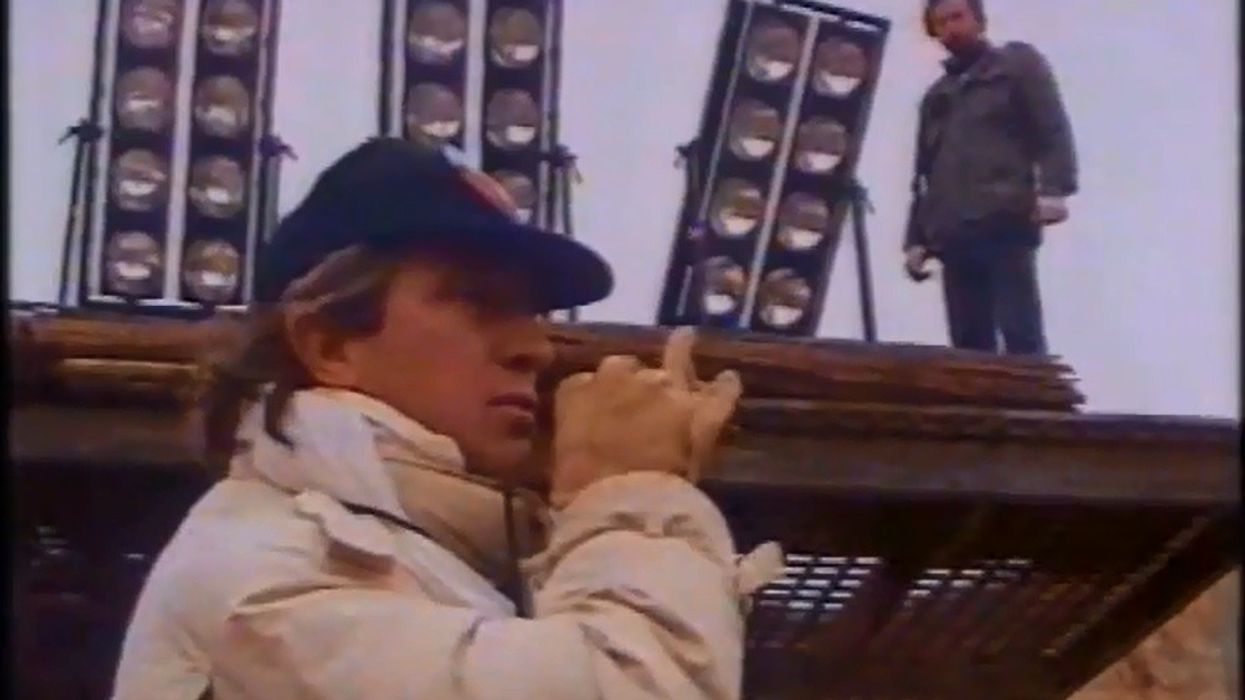Vittorio Storaro Explains How DPs Can 'Write with Light' to Tell a Story

Do you follow light like the moon follows the sun? How do the colors in your film express the thematic content? It's in answering these kinds of questions that legendary cinematographer Vittorio Storaro (The Conformist, Apocalypse Now, The Last Emperor), has developed his approach to lighting over the course of his incredible career. In the 1992 documentary profile of Storaro, Writing With Light, we not only get an overview of his career, but we get glimpses into his working process and how that translates into his films.
Often times, the most interesting aspect of these profiles is the insight they provide into how masters of their discipline relate to their craft, their thought process. I found Storaro's discussion of the lighting strategy he used for Apocalypse Now particularly telling:
I was asking to myself how I can represent this journey into our unconscious. And... so I thought that maybe the only way is to represent the same structure of our own life with the structure of the light itself. So the journey into ourself that Willard is doing is the journey that [one] could do within the color spectrum starting from the beginning to end into light to represent life. So that’s why, for example, "heart of darkness" is represented by black, black is the unconscious, [it's] where everything start; and the first step is red the color of the blood. Orange is the color of the warm, female and family. Yellow is the consciousness. Green is the process of knowing, knowledge. Blue is your intelligence as a human being. Indigo is your material power. Violet is your last stage in the human life. And the sum of all of this color is the last one, white, which means balance, which means equilibrium. Photography means write with light. So I was trying to write with light, with these elements --the colors-- the story itself.
From his later discussion of the color scheme in Dick Tracy (a film he shot some 10 years later), you see this isn't some rigid system that carries over from film to film (although there are parallels).
In another part he discusses how he breaks down a script before hand, thinking these issues out, before filming:
I start to put together, sequence by sequence, on the script itself each given idea. So the world can tell exactly what I would like to say. After [...] this journey within my mind, and try[ing] to translate [it] into words, physical words, next to the script, next to the scene itself, only then can I start filming.
Being a collaborative art form, it's particularly interesting to hear his collaborators' views -- not just praise for his art, but their opinions on his symbolic color systems. Richard Sylbert, production designer on Dick Tracy, points out that while Storaro is thinking about what he hopes each color will elicit in the audience, in the end we all have our own subjective associations with different colors. Bernardo Bertolucci points out that even when he disagrees with Storaro's particular color symbology, it's important to allow him his own interpretation as it's an essential part of how Storaro plugs creatively into a project. I found this intriguing, as it suggests that beyond what a given color may or may not mean to the production designer, director and DP, more important is that there be a coherent strategy carried out through the given film. Granted, Storaro himself insists that these strategies are supposed to be a subtle almost unconscious element of the film -- rather than a blatant key to the film's "message".
So check it out! Do you have a personal color scheme? What does blue mean to you? Share below!
Link: Writing With Light -- Vittorio Storaro -- Cinephilia and Beyond
[via FilmmakerIQ]
[Correction: A previous version of this post contained the actual documentary. It was removed at the request of the producer.]












